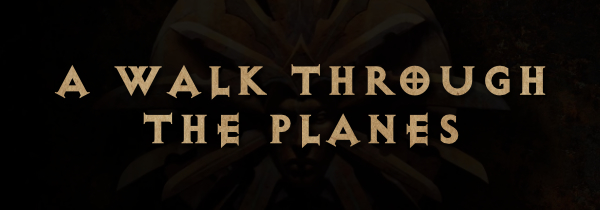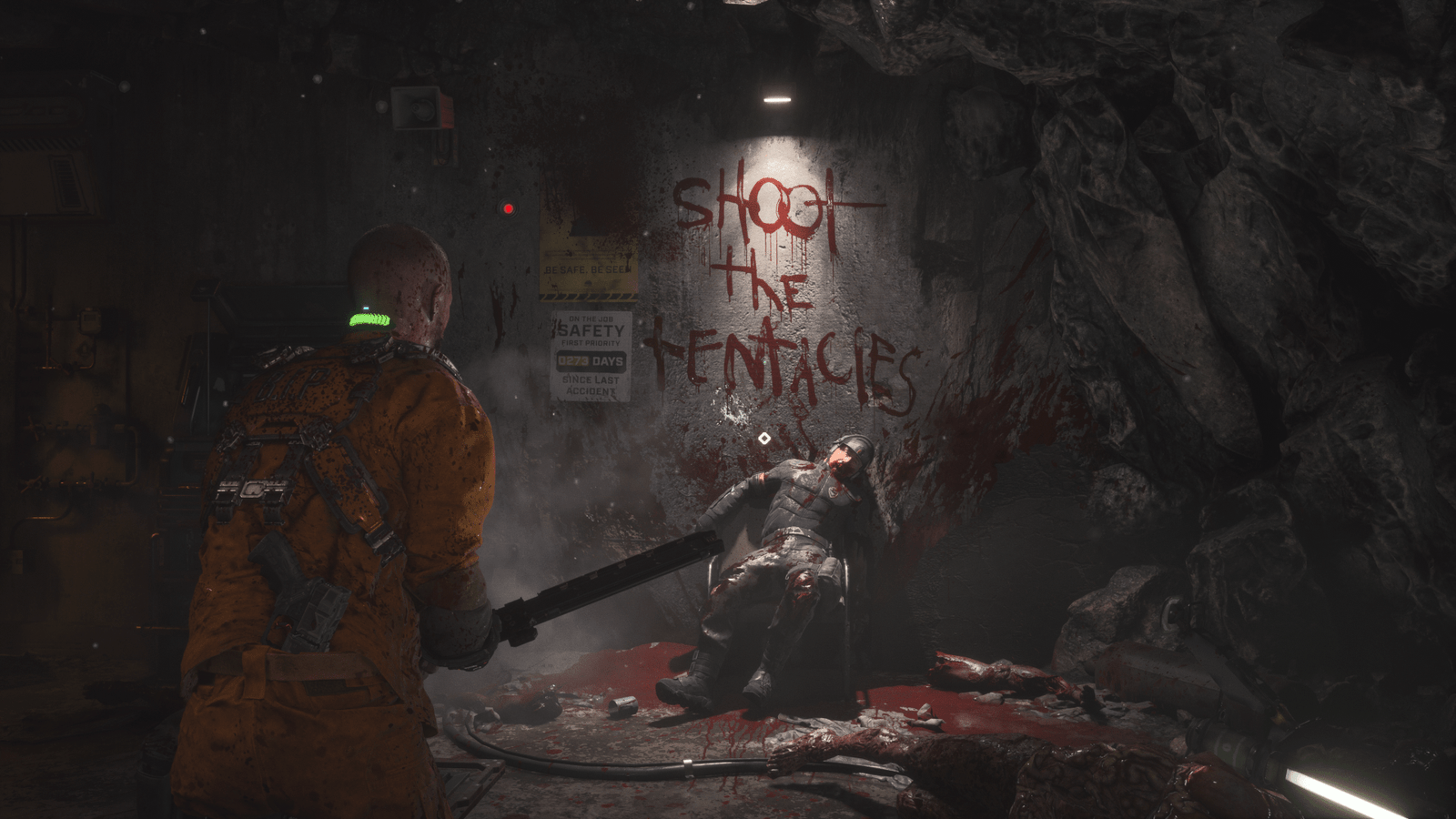The final Planescape adventure that I’ve actually run (some of), The Great Modron March‘s premise is so good that it’s a pity it came so late in the setting’s lifetime. The idea of said march in general had been mentioned a few times prior, it being that once every 289 years1 the modrons send an army around the entire Great Ring of the Outer Planes to, uhh, scout? Or search for something? The truth is, no one really knows, but in any case they do it, and it’s one of the few events in the planes that goes pretty much everywhere. As such, it’s an absolutely fantastic way of getting players to travel throughout many of the planes and experience the wonders of the D&D multiverse. Again, turning this event into an adventure was an absolutely perfect idea for highlighting what it is that makes Planescape interesting.
As a result, The Great Modron March really serves to do what both Well of Worlds and Doors to the Unknown attempted at, but a whole lot better. Like both of those works, it’s an adventure anthology, but as an introduction to the planes it’s a lot more cohesive than Well—and simply has a much better grasp of what Planescape is—and features a far, far better storyline than Doors (not to mention superior adventures on their own terms). That being said, it’s not really meant to be run straight, it’s more something that’s happening in the background of other adventures, and as such sprinkling in parts of Well, Doors, or other adventures is probably the best way to run it. Alternatively, there are plenty of opportunities for a DM with half a brain to come up with more modron-based adventures apart from the ones contained here. Although TGMM doesn’t serve as a great first session or two, once your party is familiar-enough with Planescape it’s worth throwing into the background of almost any other adventure in the setting. Even if your players soon decide they don’t care about the modrons and such, it’s a fascinating backdrop to throw onto the multiverse as a whole, to the point that if you own it and are running Planescape it can fit into most any campaign.
Before we dive into it with a bit more depth, a bit of warning: obviously not all of the 11 mini-adventures in TGMM were created equal, and more than that quite a few of them require some real effort from a DM. This isn’t a modern-day adventure path or fifth edition release, rather these adventures tend to be 10 or fewer pages (including illustrations and maps), such that they’re in some ways sketches of what these adventures might consist of. While running The Eternal Boundary or Harbinger House is probably fine for a novice DM even in 2022, I wouldn’t advise someone to jump into TGMM until they feel more comfortable behind the wheel. It’s a stylistic choice I’m fine with, but a modern version of TGMM would probably run three times this length. And while I would be ecstatic to hear about a Beadle & Grimm’s special edition of this adventure that smoothes all of that out, let’s be real, what we have here is a product of its time and place, and the resulting adventure is probably the most difficult thing to run that we’ve yet come across.
Following an introduction filled with basic information about the modrons and their march, and then a quick epilogue telling the DM why this march is arriving a hundred cycles or so early as opaquely as possible2, the first adventure is “The March Begins.” It’s a good prototype for what the rest of the book will entail in that the modrons here are somewhat secondary to what else is happening, and the reasoning for why players should get involved has little to do with them. Now, this isn’t always the case, but it’s probably worth noting if your players, like mine many years ago, don’t actually like modrons very much. The PCs are in Automota, the gatetown to Mechanus, in search of a magical item. This search just happens to coincide with the surprise beginning of the march, who save the players from being murdered through their sudden arrival and the chaos that occurs when 11,000+ people suddenly stomp through a small town.
That’s really it here, and a lot of these adventures are a bit similar in their size and resolution. Which is in fact not a criticism at all but a blessing; what I like about this is that aside from a couple of later adventures, each of these chapters is really one session long, and even the bigger ones seem no more than two. The players are really going to be traveling in and out of all these different realities with incredible speed, which means every session is unique. It also means that motivating players may require some effort, though, and the fact is that there isn’t even much of an overall plot going on until a few sessions in. Essentially, the march simply causes destruction, and the players need to figure out how to minimize it.
That’s truly the premise of the second adventure, “The Unswerving Path,” as the modrons are now in Mount Celestia and about to careen through the middle of the town Heart’s Faith. Here, the players are literally just trying to minimize damage, as thousands of modrons are unable to be dissuaded from crashing straight through buildings and people because of an ancient agreement as to their path. I remember that this is the adventure where my players learned to really hate the modrons, as their inability to talk the modrons out of this destruction pissed people off. Which is totally fine. At this point, the march is almost a force of nature, beyond the ability of players or anyone else to set right. Success here comes from realizing this quickly and working within the constraints of this difficult situation.
“Ambushed!” takes place as the modrons walk between two gatetowns, Excelsior and Tradegate. Here, the players are hired to actually protect the modrons, which starts the mini-plot that’s going to take place through several parts of the rest of the march. They learn that a group called the Tacharim have been abducting modrons in order to dismember them and bond their parts to others, giving them enhanced abilities. After following some of these kidnappers, the players find their hideout and take down a small outpost, stopping these plans for at least a little while. We’re now three adventures in, and all of them are wildly different and require varying approaches for success. At the same time, they’ve also shown multiple aspects of the modrons. It’s just good stuff.
“Politics of the Beasts” I don’t love, as it’s a bit unwieldy and involves a lot of running around from place to place—it is very much a fetch quest in the most unfortunate sense of the term—but it still has its merits. The players need to help a nymph from dying, which leads them to become involved with dogs, druids, avariels, and eventually a mortai who’ve made the modrons go off their prescribed route. Unfortunately, each group basically says they’d like to help, but need the permission of the next group, until players get all the way back to the nymph. It’s a cute concept, but also kind of tedious, and something that doesn’t actually seem that enjoyable to run. What’s more, there’s quite a few NPC’s here who will never be seen again and don’t have much to distinguish them as written, such that there’s a lot of fleshing out that needs to be done in order to make this adventure function well. It’s not terrible, but feels more like one of the B- plots from Well of Worlds, which is to say good enough to run (with perhaps some modifications), but not going to be anyone’s highlight from the book.
“Modron Madness” takes the players to another gatetown, Sylvania, where they’re introduced to a new monstrosity—a half-modron NPC who’s gone insane and only wants to die. The plot here is similar to “Ambushed!,” though much darker. The players find their way to another NPC who’s been conducting these experiments and arrive at a hellacious house filled with tortured beings waiting to be mutilated. Unlike with “Ambushed!,” it seems less likely that players simply fight their way through things until blowing up the entire place. I can see complaints that this is too similar to what happened before, but I don’t mind that it’s another twist on why people are obsessed with the modrons, and the individual doing this really becomes the main villain for the rest of the march. It’s some pretty dark shit.
“Law in Chaos” is the adventure that probably first came to mind when the march was devised, as it’s about how the modrons make it through Limbo. The answer is that this requires quite a bit of help, and the players are hired as just one group of guides hoping to get at least a few of these beings through. This is a very straightforward adventure, as it’s just “get people from point A to point B,” i.e. a full-on escort quest, but at the same time because it’s through Limbo and has a few worthwhile encounters planned I still think it’s quite excellent. Simplicity isn’t a bad thing, and I wasn’t surprised that in another person’s playthrough this was in fact the highlight of the whole adventure.
I would guess that the next two adventures are very much “not for everyone,” as they both involve heavily railroaded beginnings. In “The Modron Judge,” the PCs arrive in Bedlam and are immediately framed for a murder. Some people absolutely hate this type of premise because it means the players aren’t in complete control of the situation, whereas I’m just the opposite. No, players don’t get to choose how they enter into the situation, but they play through the much more important matter of how to get out of it. Turns out, this town has been using a modron as a judge, and he agrees to help the PCs escape if they help him. The options for how all of this works out are varied, and as such it’s one of the adventures I think is more difficult for a new DM, but at the same time the concept is novel and the adventure unique. It’s excellent stuff, and if you don’t like having players be forced into interesting situations, well, that’s your business, but for me this is the type of thing I really lap up.
“Camp Followers” is somewhat similar in its set up, which is probably the worst thing about it (I suggest breaking these two up with some other adventuring between them). Again, the PCs are stuck in a bad situation they didn’t cause, in this case being caught by a summoning crystal and forced to help a mage with her search for a rare book. What’s interesting to me about this adventure is that the march itself is extremely peripheral to the rest of what’s going on, such that it could be excerpted from TGGM entirely and used on its own. And if you do hate this type of forced-into-servitude plot device, it’s perhaps the simplest to cut from the book entirely without any real loss. At the same time, though, it leads to a short but enjoyable dungeon crawl beneath an Abyssal fortress, and also includes a nice twist at the end. Yes, it’s a cheap plot device, but it’s also pretty easily ignored if you want to simply have people be hired for this job instead, so I’m happy for this to be part of the adventure even if it may need more alteration than most.
“Sidetracked” also takes the PCs to a dungeon, but is still one of the best concepts in the whole book. I always felt that Planescape didn’t do enough with the setting’s link between all the myriad parts of the Prime Material Plane. This is understandable, given that the designers didn’t want to step on anyone else’s toes, but still felt like a waste and is something I like to play with more than the official adventures did. For once, though, that’s where a planar adventure heads, as it turns out the Modrons escaped Carceri through a long-forgotten portal in the Forgotten Realms world. Other parts of this adventure are a bit more rote, as unlike the “Camp Followers” dungeon this is intentionally an old-school D&D dungeon filled with old school traps, but that’s also a lot of its charm. Unfortunately, the adventure doesn’t really have much of an ending, but hopefully by now the players are strong enough (and DM savvy enough) to pull things together even when they most likely accidentally end up in Gehenna.
The finale of the modron-abduction plotline arrives with “The Flower Infernal,” in which the players find the Tacharim’s base and, well, destroy it. Fortunately, their fortress, the titular flower, is weird and planar-y, because otherwise this would be a somewhat basic quest. But again, that’s fine. By now, the players are more high-level, and how they actually go about this destruction is quite open. Not my favorite adventure, but it brings a conclusion to the Tacharim nonsense and feels warranted by the rest of what we’ve seen before. There’s a lot of payoff here, even if some of the trappings are rather basic.
And finally, “The Last Leg” features the players making sure that at least a couple of modrons make it all the way through the march. It’s a suitably epic conclusion, perhaps the longest adventure in the book unless players make a few specific decisions to skip to the end, and what’s more it serves to offer the players some answers they’ve probably been wondering at ages. One of the fundamental questions about this march has been why is it even happening, and with the introduction of a rogue modron named 8 the players finally get an explanation (spoiler very much ahead): “This Modron March occurred because… because… the One and the Prime is dead….”
Whoo, that’s a lot of summarizing, and I admit probably not my best work in this series, though it’s difficult to know how else to approach this adventure. The format really sets it apart from so much else, particularly adventures that would come in the future, and as such it’s really a singular release, with a lot of reliance on the DM to fit things together in a way that makes sense for their particular party. While the main gist of things is going to remain similar, I suspect that more so than most adventures this is one where a lot of parties really make this into their own, unique experience. It’s not the setting’s best adventure, but as a framework for a Planescape campaign I feel it’s peerless. If I were to start a planar campaign today, I would start including these as part of it, knowing full well that it might not become the main thrust of what the party is up to, but would certainly provide some worthwhile adventures along the way. And while it doesn’t necessarily have to lead into Dead Gods… if you’ve gotten this far already then why the hell wouldn’t you?

While I would’ve preferred a longer, more in-depth version of TGMM, at least what we have feels luxurious. We’re back to perfect-bound binding rather than the saddle stitch we had for the last two books, and while Tony DiTerlizzi is sadly not a contributor, the artwork is still consistently excellent. In particular, I’m fond of RK Post’s contributions to the release. He’s done a bit for the setting prior, but I found his work more noticeable here than before, as it really takes center stage. All of the art is pretty good, though, and I should probably give credit to the designers for adding gears to the pages as well as a marching modron flipbook on the bottom right-hand corner.
TGMM also sees the return of Rob Lazzaretti as the sole cartographer, and what a difference this makes compared with the last adventure. His maps are both usefully legible and evocative of the setting, though I must admit I had one small quibble with the work here. The maps for Automata and Bedlam included with the adventure don’t match what we saw in A Player’s Guide to the Outlands. This is mostly annoying for Automota, as what’s here is far less orderly than the original map (whereas with Bedlam this kinda makes sense). However, actually noticing and/or caring about this means you’re as obsessive as I am, so as I said it’s just a quibble, and otherwise the work is as excellent as usual.
Really, that kinda sums up my thoughts about The Great Modron March as a whole. It’s not quite the best version of this that’s imaginable, but it is still an excellent release filled with new concepts and adventures well worth exploring, whether or not you even like modrons. If you are considering running a planar adventure, this is a release I highly recommend using because it does better than any other adventure thus far in capturing both the tone and scale of the Outer Planes. This one’s an absolute classic.
1. 17 cycles of 17 years, which is much more significant than the erroneous listing in a prior work that it’s every 17 years.
2. Huge spoiler: Orcus killed Primus and briefly took over his mantle as ruler of the modrons.









